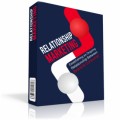
 License Type: Personal Use
License Type: Personal Use  File Type: ZIP
File Type: ZIP
 SKU: 59900
SKU: 59900  Shipping: Online Download
Shipping: Online Download
Ebook Sample Content Preview:
Introduction
Salespeople have been using human psychology to their benefit to close sales for hundreds of years. Since the days of the ubiquitous “snake oil” salesmen, the way the brain works in response to negotiation and purchase has been examined in depth to figure out exactly how and why we respond to an offer in the manner that we do.
Luckily for everyone involved - salespeople and prospects - we’ve advanced to a point where we can sell without being deceptive, simply by matching the prospects’ wants, needs, and desires to the product, service or ideas we’re selling.
The very best salespeople have always been the ones who use their intuition and empathy to learn about their prospects both as a group and individually. They generally have an open mind and a wide-open view of the world. Top salespeople enjoy learning new things that directly oppose their own views, and they love a good debate. The ability to study each potential buyer and respond immediately and appropriately to their verbal and physical cues is essential to anyone who depends on sales for their livelihood.
In this e-book, we’ll take a look at the history of psychology in sales, what makes psychology so important in sales, and the key strategies we can utilize to best close the deal. We’ll also discover how to best use psychology and reverse psychology in our negotiations with prospects.
History of Psychology in Sales
Interestingly enough, snake oil salesmen really did sell oil - but it had no oil in it that came from any snake. Usually, a mixture of mineral oil, beef fat, camphor, and a few other ingredients, the original snake oil salesman, Clark Stanley of Stanley's Snake Oil Liniment was sued by the United States government in 1917 for misrepresenting the ingredients of the oil. A $20 judgment was placed, and thereafter, anyone doing shady business was deemed a "snake oil salesman".
During the late 1800s to early 1900s “Pyramid Selling” became a popular means of sales of cash registers, and was originally started by John H. Patterson. The idea behind pyramid selling was that a business owner would purchase a cash register, and then be tasked with demonstrating his cash register to other business owners within his geographic area and selling them on the cash register as well. Pyramid selling (also known as pyramid scheming) is today defined as financial fraud, and shouldn't be confused with Multi-Level Marketing, which is a legitimate sales platform, usually selling a physical product.
In the early 1900s, several different sales techniques came to the fore - both legitimate and otherwise. In 1918, a man named Grant Nablo claimed that he could size up a prospect by looking at the shape of their forehead. Reportedly, a prospect with a “high” forehead would be an easier sale to close as they had more room for creativity and imagination, and would be less likely to be put off by new ideas and ingenuity.
Interestingly, in 1923 the Ford Motor Company adopted Nablo’s theory and began including its instruction within their sales training. “Sell the vehicle according to the shape of the prospect’s head”, it read.
The 1940s and 1950s were huge when it came to developing sales techniques, strategies, and methods. Relationship selling, barrier selling, and the SELL method (Show, Explain, Lead to benefits, Let them talk) were all developed in the early-to-mid 1940s. The most popular of these was relationship selling, created by Dale Carnegie, and still very widely used today by most sales professionals.
During the late 1940s and early-to-mid 1950s the ADAPT method (Assessment, Discovery, Activation, Projection, Transition), ARC method (Ask, Recommend, Cross-sell, Close), and the AIDA method (Awareness, Interest, Desire, Action) were all developed and many of these methods, and hybrids of them, are still in use today.
All of these various methodologies paved the way for the future of sales. There was now a much deeper understanding and appreciation of how human psychology affected negotiation and sales. As businesses grew to sizes never before seen, the need for more advanced and complex sales methodologies grew as well. And while everything that came before had been sufficient, if not necessarily ethical, there was now a need to create new methodologies.
Before the 1960s, most sales methods relied heavily on manipulating people in a rather questionable nature. When you consider that some tactics aimed to trick the buyer into saying "yes" to a sale (barrier selling), or the canned and impersonal presentation of formula selling, there was now a distinct need for a sales methodology that was based on honesty.
Enter Xerox Corporation. Yes, the copy machine company. You simply can’t talk about innovation in psychological sales methodologies without highlighting how Xerox changed the sales playing field forever.
Back in 1968, after Xerox had lost the patent for dry photocopying, the corporation found that their sales representatives now had much more competition, and “old” ways of selling just weren’t working any longer. Xerox needed new sales strategies, so they invested over ten million dollars in research to do just that.
What this research revealed would become a brand new approach to negotiation and sales entitled Needs Satisfaction Selling. Prior to this, there really was nothing new in sales methodologies. There were crossovers and hybrids of already developed methods, but this was the first time that salespeople were actually encouraged to create longlasting relationships with their prospects and clients instead of just chasing the close.
No longer were canned presentations utilized, and trickery and excessive manipulation were now a thing of the past. With Needs Satisfaction Selling, salespeople were aiming to get the prospect involved in the sales process, instead of solidly controlling the process themselves. It was the first time that salespeople were trained to ask questions, find out what the buyer wanted and needed, and then present the features and benefits of their product or service, and explain how it filled those wants and needs. This was the very first time that salespeople were told to truly interact with their prospects
During this same time period, others were noticing that the old methods of sales weren’t effective any longer. Because of this, a deeper look at the new science of psychology had begun. Many top sellers dove into learning basic psychology as a way to tailor their sales methods to their audience, with varying degrees of success.
One of the most famous of these sales pioneers was David Sandler, a motivational sales professional who developed the Sandler Selling System, still very much in use today. The Sandler Selling System is aimed at placing the salesperson at the same level as the prospect, with mutual respect and appreciation. The system is based on honesty and the psychology of human nature and that’s the very reason why it works so well.
The 1970s and 1980s brought a few new methods into play but it has been argued that nothing truly earth-shattering happened until the 1990s ushered in the era of Relationship Selling which is still the most widelyused selling foundation today. Relationship selling is based on the fact that with growing technologies, buyers have become more intelligent and thoughtful. Relationship selling means that you work to create genuine relationships with your buying prospects, and sell to them what you know they need based on what you know they want. Building the relationship as the foundation for the sale breeds trust, loyalty, and greatly increases the chance of a referral from a satisfied client.







